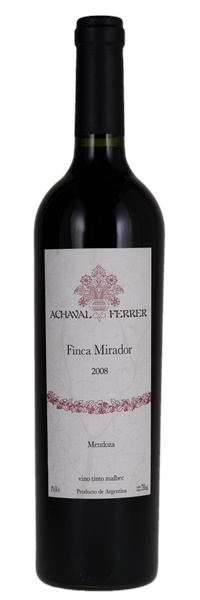Estimate

..a kinky nose of wild berries, brier, underbrush, and exotic spices. Already complex with superb depth and intense flavors, this is an exceptionally lengthy offering...should be at its best from 2013 to 2023.
Superrich and still quite tight, displaying a strong charcoal & graphite spine that holds the core of dense plum skin, anise, blackberry and Black Forest cake at bay. The long, grippy finish lets Turkish coffee & licorice notes flesh out.
...blackberry, cassis, black cherry and mint aromas complemented by strong smoky, meaty soil tones. Ripe and large-scaled...Strong acidity and big, broad tannins saturate the palate of this very firmly structured, ageworthy malbec.
Pure raspberry, soft tannins, spice, dry finish, lovely grainy texture. Fantastic leathery length. This gets the best out of Malbec, for sure. (RH)